Prince William and Kate Middleton Almost Didn't Take Their Most Iconic Wedding Photograph

- Oops!Something went wrong.Please try again later.
Ahead of Prince William and Kate Middleton's eighth anniversary, their royal wedding photographer Hugo Burnand revealed to T&C what it was really like to document history, from his jellybean bribes for the kids in the bridal party to the one photo that almost didn't happen. This month, as the Cambridges celebrate their tenth wedding anniversary, we're revisiting the story.
How Burnand landed the gig of the century
On April 20, 2011, Kensington Palace announced in a statement that Prince William and Kate Middleton had chosen Hugo Burnand to be their official wedding photographer. For some, it was an obvious decision; Burnand was well-known in London circles, having been Tatler Magazine’s society photographer for more 20 years. He was also already well-versed in royal weddings, having served as the official photographer at Prince Charles and Camilla's nuptials in 2005.
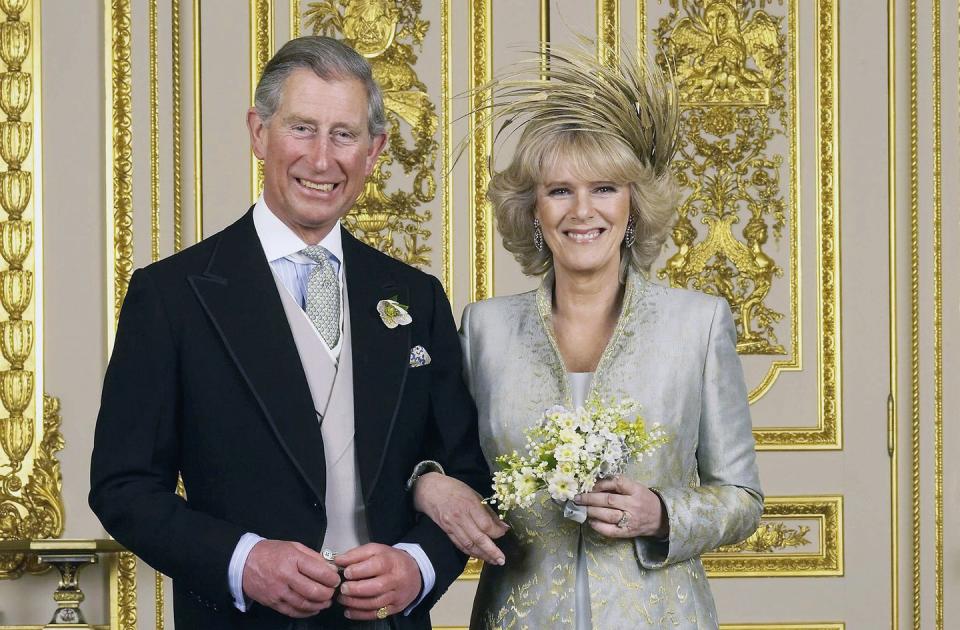
But he almost said no to that royal wedding. He had been traveling in South America with his family for six months when one night everything they owned was stolen, including his camera equipment. He managed to get internet access the next day, and “bizarrely there was an email from Camilla Parker Bowles saying that she had a big date coming up in April, and she wanted to know if I’d be available to take some photos.”
Of course, it was too big an opportunity to turn down, and Burnand cut his family’s travels short to make the celebration. “I thought it be a shame to miss out on photographing the future king of England’s wedding and the future, future king of England who would be there too,” he says.
It was that job that eventually led to Burnand's relationship with Prince William. Following Charles's wedding, the Prince of Wales started asking Burnand to take pictures of his sons. “I was [at Kensington Palace] relatively often for various things,” he says. When William and Kate announced their engagement, he was naturally in the running.
“I said, ‘Am I on for it?’ and they said, ‘Ooh, there’s a few people.’ Well, actually, apparently, there was never any question. They just liked to keep me guessing.”
What it was like planning for the wedding
Burnand and his team had limited time to plan their part in one of the biggest weddings of the century. “We had three weeks of serious pre-production organization and then three days right before the wedding when we set ourselves up at Buckingham Palace inside the Throne Room—it became our home,” he says.
The Throne Room was where Burnand and his team were to take those important historical portraits. “We wanted it to look like a spring day and, of course, no one knew if it would actually be a spring day so we lit it through the windows so it would, regardless,” he says.
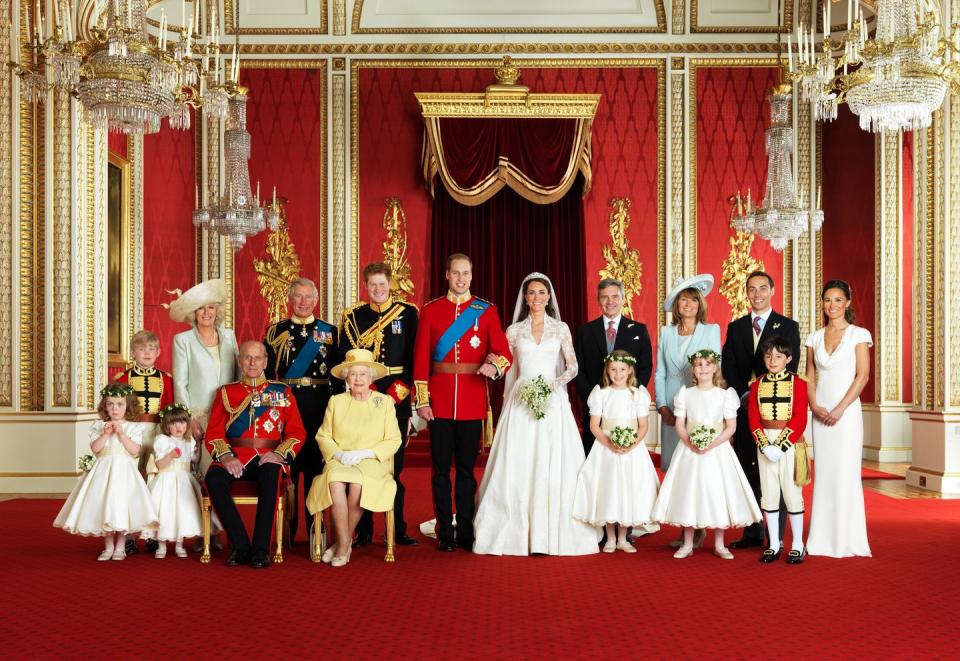
In general, lighting the room proved to be their biggest challenge. “The silk damask on the palace walls sucks in all the light,” he explains. So, the team used a “Chinese lantern up on the ceiling which was higher than the chandeliers to give a gentle light, to stop it looking artificial.”
They had to bring in a huge amount of equipment as well. “I don’t carry the equipment to light a Throne Room on a daily basis," he says. "And we had spares for everything and then spares for the spares."
The prep also involved meticulous time-keeping. “We did dress rehearsals with stopwatches using endless staff from Buckingham Palace to fill in as family members, so we knew we had just enough time," Burnand explains. "The Fly Past was at 1:30 p.m. and we couldn’t over run, even by a minute.”
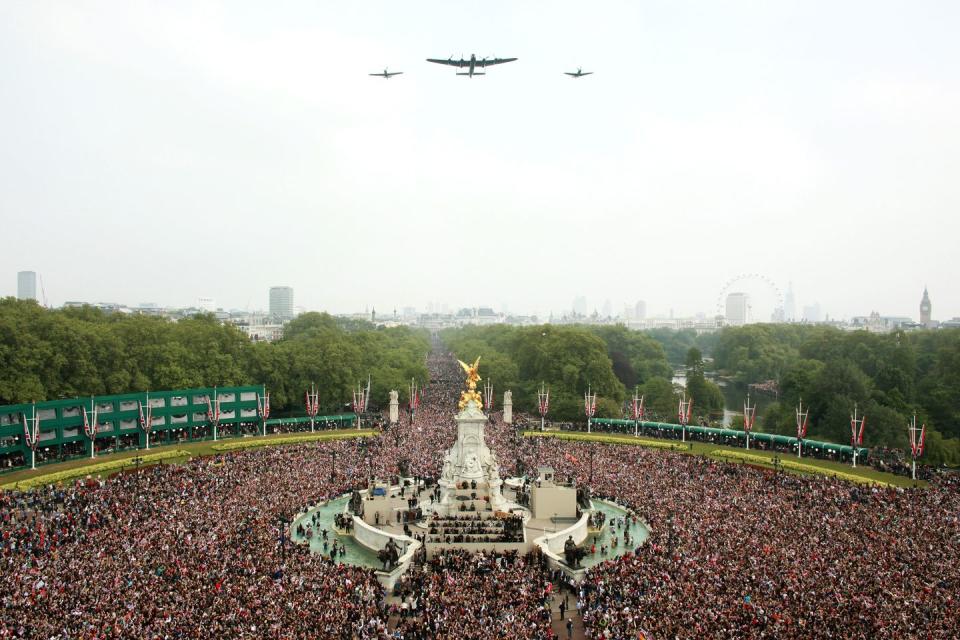
The portraits themselves were also thoroughly planned in a “specific schedule.” Burnand says he and Kate, who is an amateur photographer herself, had lengthy discussions about how they both wanted to create unique pictures. “We decided not to photograph any of the portraits up against the wall because the architecture of the room was so amazing,” he says.
“There was one picture I really wanted to take, but we were only allowed to take this picture if we had achieved everything else.”
The big day, and the photo that almost didn't happen
After an enormous amount of planning, April 29 finally arrived. Just after sunrise, the streets surrounding Westminster Abbey and Buckingham Palace were already bustling with millions of well-wishes, each hoping to catch a glimpse of William and Kate's special day. So, was Burnand nervous?
“We were so prepared, it was very exciting to be that prepared. I don’t think I have ever been that prepared in all my life," he says.
"The extraordinary thing is, if you really do have everything in place—you have practiced a bulb exploding and how quickly you can change it; you’ve practiced the lens freezing; the camera freezing and how to coax a child away from hiding behind a curtain. Our preparation was so tip-top that all we really wanted was for it to happen, we were like ‘come on, test us, test us,’ so it wasn’t scary, it was incredibly exciting.”
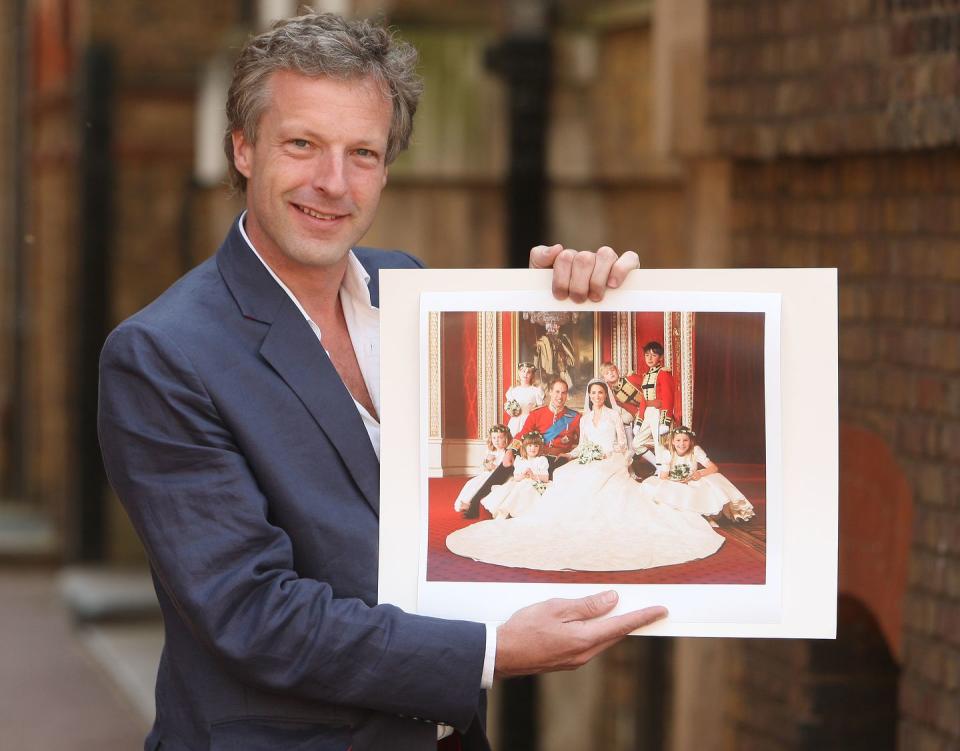
With such a short amount of time to get those key shots, Burnand had a few tricks up his sleeve to make sure the wedding party were at ease.
“It was important for me to have female influence on my team otherwise it becomes a bit school-like with lots of men standing there in their morning coats. It can feel threatening, perhaps not to the older generations but to the younger ones. My mom [photographer Ursy Burnand] was the hands-on granny and helped me with the children and there were jelly beans, lots of jelly beans.”
Burnand filled an enormous bowl of the candy and a bowl of what he calls "healthy snacks." "I told them all that they would get jelly beans if they were good. Bribery is good—but you can’t give in to bribery if they haven’t done their job," he says.
“By the end of the shoot there were hardly any jelly beans—it wasn’t just the children who were eating them.” It turns out nobody wanted the healthy treats. “They were all that was left.”
Burnand adds, “We finished with three minutes to spare so I asked Catherine if we could do the shot we had talked about previously. And she turned to William and said, ‘What do you think?’ And he said, ‘Let’s go for it.’ So in three minutes she sat down on the steps, Sarah Burton put the dress out perfectly, Prince William leant in, the children basically did what they felt was the right thing to do.”
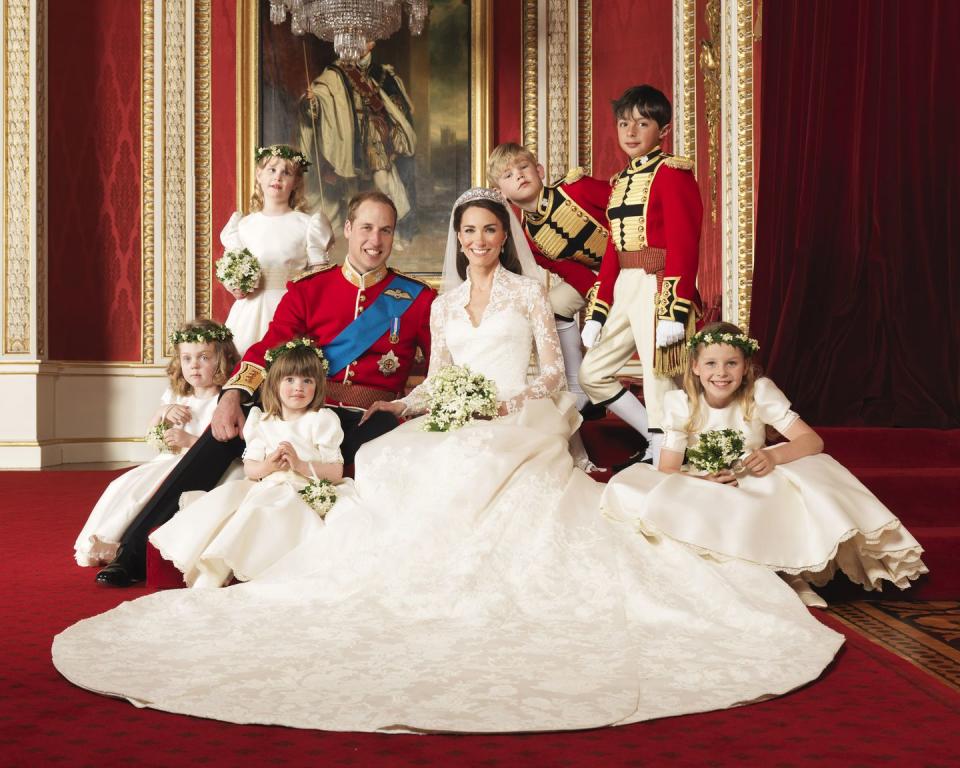
“That was a very spontaneous picture. That little detail there [points to Kate’s hand touching William’s knee] and William leaning in there, all these things were not directed, but a result of a good relationship with everyone.” It was Burnand's favorite portrait from the day.
When he and his team were leaving the palace, they walked past a Winterhalter painting of Queen Victoria, Prince Albert, and their children.
"I don’t know whether I had seen it before or not but it’s quite similar to the shot of Catherine and William sitting down, the colors, the positions," he says. "Subliminally I think I may have been referencing that, but I didn’t have it in front of me, I hadn’t seen it recently. And yet it managed to influence my shot. That was the first time I felt very emotional, like 'Wow, we’ve really done something.'"
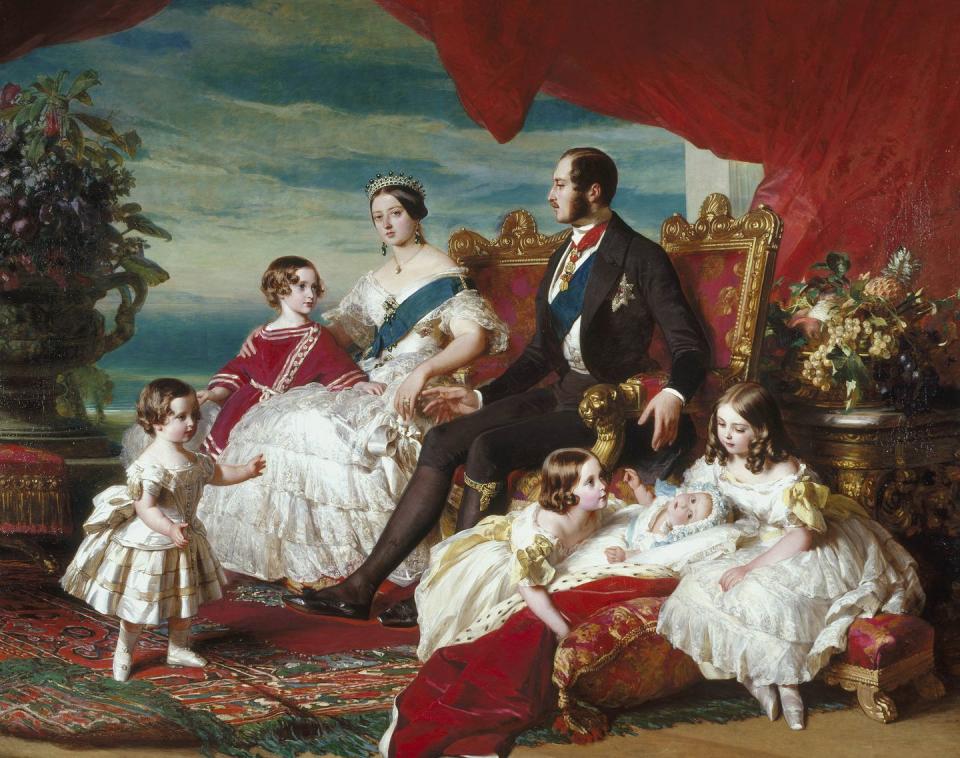
But there's one aspect of the day Burnand can't quite remember. "We were standing in the room behind the balcony, looking down the Mall, and it was incredible to see that image of so many people I was standing there with my assistant and I said, 'we have to pinch our arms so never forget this moment,'" the photographer recollects.
"So we both pinched our arms and then about two days later I said, 'Do you remember being behind the curtain?' and he said, 'Yes.' I said, 'Can you remember what we saw?' He said, 'no.' [laughs] I can only remember pinching myself too. I have no recollection of what the Mall looked like but I do remember the pinching."
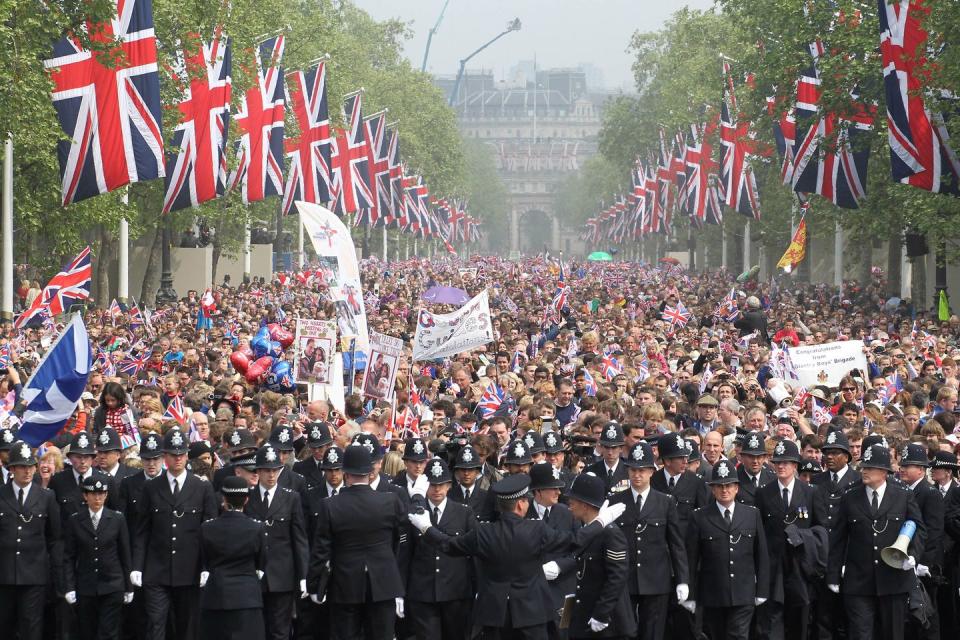
Life and work after a royal wedding
While he admits to not really realizing "the enormity" of the job until a police man recognized him as he cycled home after the royal wedding, Burnand was soon highly in-demand—and not just for weddings.
"Bizarrely, the first commission I got afterwards was to fly to Tanzania to photograph the migration of the wildebeest across the Mara River. I have no idea why the royal wedding inspired that, but it was an incredible opportunity and I absolutely loved it," Burnand says.
He added, “I’ve been tremendously lucky, and have been asked to travel the globe to photograph weddings, as far as India in one direction, and to the USA in the other, and I have to say that some of the most fun ones have been in America—they really know how to celebrate a wedding.”
But Burnand admits that he did (and still does) turn down wedding jobs. "You can’t, as a photographer, give that dedication to people every other weekend otherwise you run dry and become a cynic," he says. "So I don’t do that many weddings, I try and limit it to a handful a year."
That said, Burnand and his team are lined up to photograph Gabriella Windsor’s wedding on May 18, for which is he "thrilled."
But was he disappointed he wasn’t asked to photograph Prince Harry and Meghan Markle’s wedding last year? "Not at all. I’ve had a really good bite of that cherry. It’s rewarding of them [the palace] to spread the opportunities around. What I did is that I watched so closely from the sidelines. I really enjoyed being a guest at the wedding, it was amazing to not have the pressure and I loved it purely because I was experiencing what I hadn’t be able to experience the time before."
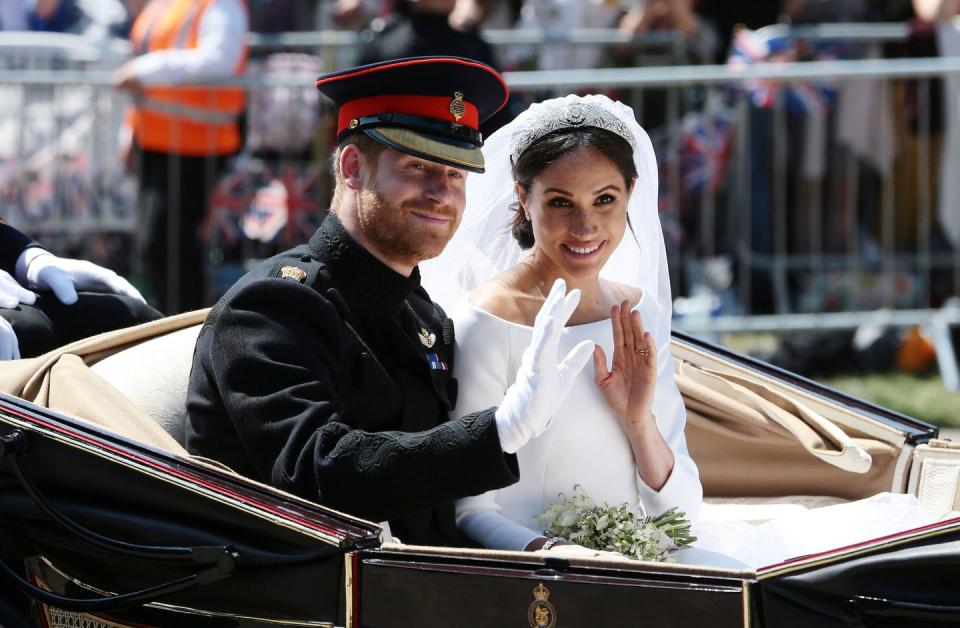
Today, alongside his private work, Burnand is turning his photography "into something that can help people." He co-founded a conversation charity in England and Panama called Panama Wildlife Conservation and in 2017, a series of pictures he took of indigenous tribes were exhibited at the V&A and sold to raise money. He’s also working on a rehabilitation project with prisoners in the U.K.
And his next big ambition? "Whatever I do, try not to f*ck it up." He adds, "I think the reason why I’m still taking photographs, why I’m still going around the world is that I really, really enjoy it and I want to keep doing it."
You Might Also Like

